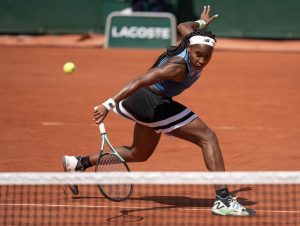The Laver Cup may not yet have won every tennis fan over, but its popularity is undeniably growing. Three years in and many have embraced the dynamic and entertaining format and structure of the new competition. Boisterous crowds, super shot making and fired-up players suggest that it is an event that is here to stay.
After Team Europe captured their third-straight Laver Cup in Geneva, attention for the fourth edition slowly turns to Boston in 2020, where Team World will hope to finally get their hands on the trophy for the first time. And after a successful start to life, this new staple of the tennis calendar clearly has many qualities that should be retained. At the same time, no sporting event is perfect and the Laver Cup is no exception. But what changes should be made to propel the competition further into the public’s sporting consciousness over the coming years.
Laver Cup Keepers
Keep: the up close look into team coaching on the changeovers. Being able to see and hear all time legends such as Roger Federer, Rafael Nadal and Novak Djokovic coaching each other as well as other teammates is undeniably a fascinating insight, one that is almost worth the price of admission by itself. All of a sudden, tennis fans have an intimate look into discussions of strategy and shot making that have never been seen before. The fact that the top players have so embraced this opportunity has made this element of the Laver Cup an unqualified success. Outstanding.
Keep: the focus on doubles. Fully one quarter of Laver Cup points are the preserve of doubles. Seeing the top players in the world embrace the doubles stage brings a different, much-needed light to the doubles game. Contesting doubles first on Sundays in Chicago and Geneva provided electric scenes which set the stage for dramatic days. In what other event has the world #210 critically impacted the entire affair by winning matches against Nadal and Federer? Team World doubles star Jack Sock did just that and now holds an impressive record of having played in all nine Laver Cup doubles matches. Will he extend that record in Boston in 2020?
Other keepers include the thrilling ten point tiebreakers, the clever black court, the relaxed attention to fans, highlighting the actions of teammates on the benches and in-match interviews. All of these add to a unique, fan-friendly experience and make the Laver Cup a must-see after only three years. But ahead of the fourth edition of the competition in Boston, the following would surely improve the event:
Line-up Confusion
Current rules dictate that no two players can match up in singles twice in one Laver Cup. With that stipulation, Friday’s’ line ups are submitted blind. In 2019, Team World submitted first on Saturday and Team Europe chose the matchups they wanted, including Roger Federer against Team World’s Laver Cup stalwart Nick Kyrgios. That left Team World to choose matchups on Sunday. But when Rafael Nadal withdrew to injury on Sunday morning, Team World completely lost their advantage in setting line-ups.
Despite arguments from Captain John McEnroe and Vice-Captain Patrick McEnroe, Team World were denied their chance to set the matches of their choice. In all of this, the role of alternates Jordan Thompson and Roberto Bautista Agut were not even discussed. Why? Scrap the rule. Like golf’s Ryder Cup, line-ups should be submitted blind every day. If players match up twice, so be it. The deft strategy of trying to outguess opposing captains in the line-up game will only add intrigue. If a name that is submitted cannot play his match, it is deferred to the team alternate, no plugging in stars after the fact.
Change Day One format
Currently, day one matches count for one third of the points of day three matches. Three singles and one doubles match are played with two sets of ad scoring and a 10 point match tie-breaker in lieu of a third set. Since day one matches count for less, play differently. Day one should be changed to two sessions of four matches each. Three singles and one doubles match to be played in each session. Scoring should be one pro-set to 8 games with a 10 point tie-breaker at 8-8. One match ends, the next begins, with a five minute warm-up in between.
All six team members would be required to play on Friday and no doubles team could play twice. Each match would count for .5 points. While the fractional point would look odd at first, at the end of the day there would be four full points awarded in this rapid fire shoot out. Fans would love it and the importance of the full matches on day two and three would be enhanced. Following day one, each player would be required to play at least once on either day two or three, minimizing the chance of picking up an injury from playing full matches on back-to-back days and requiring even more strategic thinking from captains.
The Captaincy
John McEnroe and Bjorn Borg have agreed to captain their teams again through to 2022. These legends added immediate legitimacy and an aura to the Laver Cup. But is it in the best interests of the competition to have the same captains for six years? Probably not. In fact, no person should be able to captain a Laver Cup team more than twice in a row. The change in personality and leadership of the captain would surely help enhance the history of the event.
Eight-time Major champion Andre Agassi, for example, could be a Team World candidate, or to branch from Americans, one of the great Australian stars of the past such as Pat Cash, Pat Rafter or Lleyton Hewitt could take the mantle. Team World, meanwhile, could look toward the Swede’s Mats Wilander and Stefan Edberg or perhaps Croatia’s Goran Ivanisevic, all of whom remain figures of real stature in the men’s game, before the inevitable transition to Roger Federer after his retirement. Maybe even a playing captain one year? Roger?
Other Changes
The Laver Cup clearly has aspirations to become the Ryder Cup of tennis. So put your uniform where your mouth is. For one weekend, get rid of the corporate logos that drench the players and have the teams in matching uniforms. Like golf’s Ryder Cup, players should have a new uniform each day and should be identical across the team – an elegant team display. This will of course be difficult due to player’s sponsorship agreements, but most do so during the Olympics.
Besides corporate logos, more transparency could be shown with Laver Cup payments. Rumours of great variances in appearance fees are difficult to navigate – make it plain. The Laver Cup should identify exact payments of significant, but not extreme amounts and then allow players to designate money to charities of their choice. Only stars are playing, so let them use their appeal to generate money for charities of their choice.
Finally, in the United States, get the event more television exposure to attract more casual fans. Tennis Channel covered the event with voices and pre/post game coverage that do not match what this event can be. On 2019 Sunday in Geneva, it was clear that only commentator Lindsay Davenport had any idea how to explain the line-up confusion. ESPN’s team of Darren Cahill, Brad Gilbert and Chris Fowler will greatly improve the show. It will be a tap dance around football schedules, but it is needed to expand the audience.
So a growing event and exhilarating weekend of tennis slip into history. After the Grand Slams, the Laver Cup is quickly becoming many fans and players’ favourite event. Time to evolve as the circus rolls toward 2020 in Boston.
Main photo:
Embed from Getty Images






